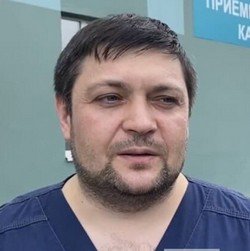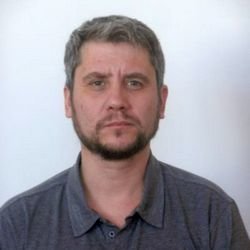Paradoxical impact of coronavirus: injuries in children rose, in adults fell
“There is no place for children to stay because of the epidemiological situation, hence the injuries”
The number of children’s injuries in 2020-2021 rose — children are left to their own devices because all organised sites are closed due to the coronavirus pandemic and restrictions. It is paradoxical but because of those restrictions, the seasonal rate of injuries in adults Tatarstan citizens reduced in the end. Leading traumatologists Ruslan Khasanov from Children’s Republican Clinical Hospital and Albert Galimov from Urban Polyclinic No. 7 of Kazan told us about the most dangerous entertainments. They also explained why vertebral compression fracture can be “missed” in patient children whereas it becomes more dangerous for the elderly year after year because of the “mute osteoporosis epidemic.”
According to Albert Galimov, the number of visits to hospitals with complaints about injuries increases with the first icy roads every year. Ruslan Khasanov said that today — with the beginning of seasonal injuries — up to 200 admissions with children’s injuries are registered a day, 30-40% of the patients are referred to inpatient treatment.
Doctors have registered a rise in children’s injuries in the last two years alone, the coronavirus pandemic is the cause.

“Parents can be sympathised, children have a lot of energy. There is no place for children to stay because of the epidemiological situation, hence the injuries.”
On the other hand, as paradoxical as it might sound, precisely the seasonal injury rate in adults reduced because of the same coronavirus or, more precisely because of quarantines and other restrictive measures. According to Albert Galimov, this year his injury unit has registered fewer complaints about injuries for this reason. Nevertheless, the problem is still quite serious. People end up in hospitals with strains or fractures, the ratio is three to one. Precisely old Tatarstan residents receive seasonal injuries, moreover, their injuries are more serious than those of youngsters: upper arm bone fractures, hip fractures, which require surgery and long-term recovery.
“The elderly receive treatment for a long time and stand up these injuries poorly. Such cases account mainly for 10-15%. Youngsters receive serious injuries less often, it is mainly bruises, strains,” Galimov noted.
According to the Kazan traumatologist, to avoid serious consequences, firstly, it is necessary to choose a good non-slip pair of shoes or different gears like ice clits. Secondly, during such a season, it is necessary to walk very carefully, avoid icy areas, better “on the snow.”
“Better make small steps, bending the legs, don’t rush,” the head of the injury unit of Urban Polyclinic No. 7 advised.
“The season began very intensely”: ski resorts, inflatable sledge riding are the most dangerous entertainments
Also, it is a problem that the “ice age” begins in autumn. This year, it is relatively warm, this is why many still wear autumn-winter shoes on hard soles. At the same time, it turned out that Tatarstan ski resorts became “one of the key suppliers of patients for traumatologists,” children with hip fractures have already started to be received by specialists.
“The season began very intensely. As adults usually run from one place to another, they don’t care about children, they pay less attention to children. Today children aren’t even taught how to correctly walk and where. This moment is missed. Children were taught this in the kindergarten and primary schools in the USSR,” the children’s traumatologist noted with sadness.
Unlike the elderly children mainly have hip, knee, ankle and sometimes vertebra fractures. The favourite winter entertainment — riding inflatable sledges — is one of the causes why children end up in the clinical hospital with injuries.
“The child isn’t fastened, the position favours a neck, pelvic injuries. There were deaths too. Sledges are a more manageable type, one has time to turn to one side, stop with the legs. One can ride inflatable sledges only if the site is organised fully — there are people who oversee the rides. Something similar was organised near Mega shopping mall two years ago, I don’t remember anything else,” Ruslan Khasanov admitted.
Albert Galimov, a skier himself, advises being careful when skiing downhill, using different skiing techniques depending on the snow, if it’s hard or puffy. Also, he urges both adults and children to “avoid tricks,” skate in a circle, following safety rules. Considering the season that just began, three patients with strain and one with hip fracture sought advice last week. This week, two children have been admitted to hospital from ice rinks
“Patient children” who never complain their parents about any pain after falling and standing up is one of the main troubles of children’s traumatology. However, if the pain doesn’t go away in a couple of hours and a bruise appears, one should certainly go to the injury unit. Better safe than sorry, traumatologists advise, have a look at children after walks, paying attention even to bruises. If the child behaves strangely, there is dizziness, for instance, here they should rush to see a neurosurgeon. Perhaps, it is a head injury. Children’s patience and parents’ negligence sometimes leads to a situation when much time passes until a doctor sees the children.
It should be reminded that today Kazan has eight injury units for adults and two for children. One children’s unit in the clinical hospital works around the clock and admits Tatarstan citizens from all Tatarstan districts.
“Osteoporosis is our ‘mute’ epidemic, this is why the risk of fractures is too high today”
At last, there is another problem that affects all ages — vertebral fracture. Though it sounds terrifying, it doesn’t look like people usually think. However, the consequences of such a fracture can be serious in the end. For instance, if at the same resorts a skier can have a serious hip injury in rare cases when particles damage blood vessels, in the city, children quite often have vertebra fractures.
A person may not even feel the vertebral compression fracture, traumatologist Khasanov notes. The pain in children can disappear in a day and reappear suddenly in a couple of weeks when parents stop associating this pain with the recent injury. Traumatologists advise paying attention to any complaint after falls, particularly, breath holding (Editor’s note: one of the key symptoms of such a fracture). In the hospital, specialists will do a test and find out if there is dislocation of vertebra. Albert Galimov says that the reaction to the vertebra fracture depends on the pain threshold and a person’s patience:

Traumatologists sometimes detect such fractures in two weeks too. While the dislocation of one or two vertebrae can be seen in a month. This leads to long-term bandage wearing, the necessity of massage and long-term treatment. To prevent the consequences from lasting for years, a timely diagnostic is needed, which means timely seeing a doctor.